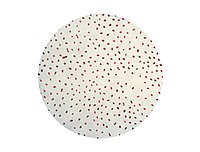
Photo from wikipedia
OBJECTIVE To find parameters for differential diagnosis between Brucella epididymo-orchitis (BEO) and non-brucella epididymo-orchitis (NBEO) cases with comparison of BEO and NBEO in terms of inflammatory markers, full urinalysis (FU)… Click to show full abstract
OBJECTIVE To find parameters for differential diagnosis between Brucella epididymo-orchitis (BEO) and non-brucella epididymo-orchitis (NBEO) cases with comparison of BEO and NBEO in terms of inflammatory markers, full urinalysis (FU) for pyuria, and abscess formation (AF). STUDY DESIGN Descriptive study. PLACE AND DURATION OF STUDY Agri State Hospital Urology and Infectious Disease Clinics, between January 2014 and November 2017. METHODOLOGY Data of the patients, who were diagnosed with epididymo-orchitis, were divided in BEO and NBEO groups on the basic of serum agglutination test. Parameters including age, white blood cell neutrophil, lymphocyte, monocyte, platelet, mean platelet volume, C-reactive protein (CRP), neutrophil/lymphocyte ratio, monocyte/lymphocyte ratio, platelet / lymphocyte ratio, and FU. The values were statistically compared. RESULTS One hundred and thirty-eight (138) patients were found eligible for the study. Twenty-three (23) of these patients (16.66%) had BEO, and 115 (83.33%) had NBEO. BEO vs. NBEO cases were significantly different regarding mean age (26.17 ±8.15 vs. 48.53 ±21.78 years, p=0.0001) and frequency of pyuria (3,13.04%) vs. 89 (77.39%, p=0.001). However CRP values i.e. 6.07 ±6.59 vs. 6.07 ±5.85 mg/dl (p=0.999) was not significantly different. CONCLUSION BEO cases are often younger and do not have pyuria or abscess formation. High frequency of pyuria was found in NBEO cases. CRP levels cannot be used in the differential diagnosis between BEO and NBEO cases. Key Words: Abscess formation, Brucella epididymo-orchitis, C-reactive protein, Orchiectomy, Pyuria.
Journal Title: Journal of the College of Physicians and Surgeons--Pakistan : JCPSP
Year Published: 2020
Link to full text (if available)
Share on Social Media: Sign Up to like & get
recommendations!